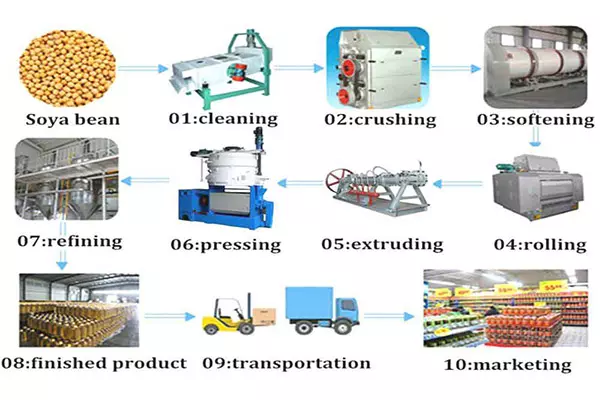
Introduction
Soybean oil is a widely used vegetable oil, known for its health benefits and various applications in the food industry. Understanding how is soybean oil made, its properties, and the production process can help you appreciate its value and make informed choices. Let’s dive into the details of soybean oil production and its significance.
What is Soybean Oil
Soybean oil is a vegetable oil extracted from soybean seeds (Glycine max). It is widely used in various food products, including salad dressings, sandwich spreads, margarine, bread, mayonnaise, non-dairy coffee creamers, and snack foods.
Soybean oil is cheap, healthy, and has a high smoke point. It contains natural antioxidants and many nutrients like linoleic acid, Vitamin E, vitamin D, vitamin A, carotene, calcium, phosphorus, iron, and rich lecithin.
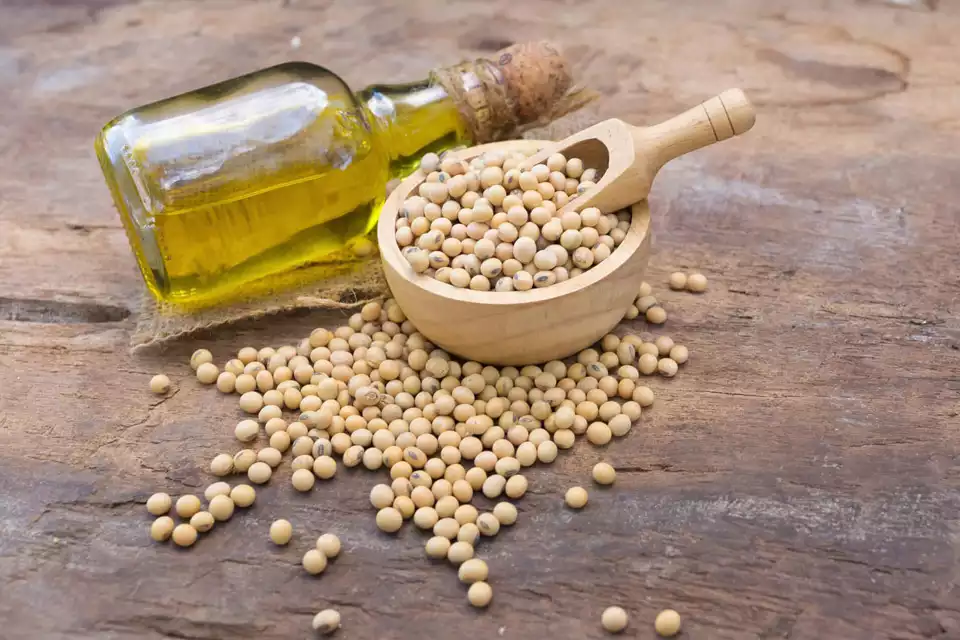
How soybean oil is made
Which Countries Produce Soybean Oil
According to the United States Department of Agriculture’s 2024 report, China is currently the biggest producer of soybean oil, producing around 17 million metric tonnes in 2023. Brazil, the U.S., and Argentina follow in the second, third, and fourth spots, respectively.
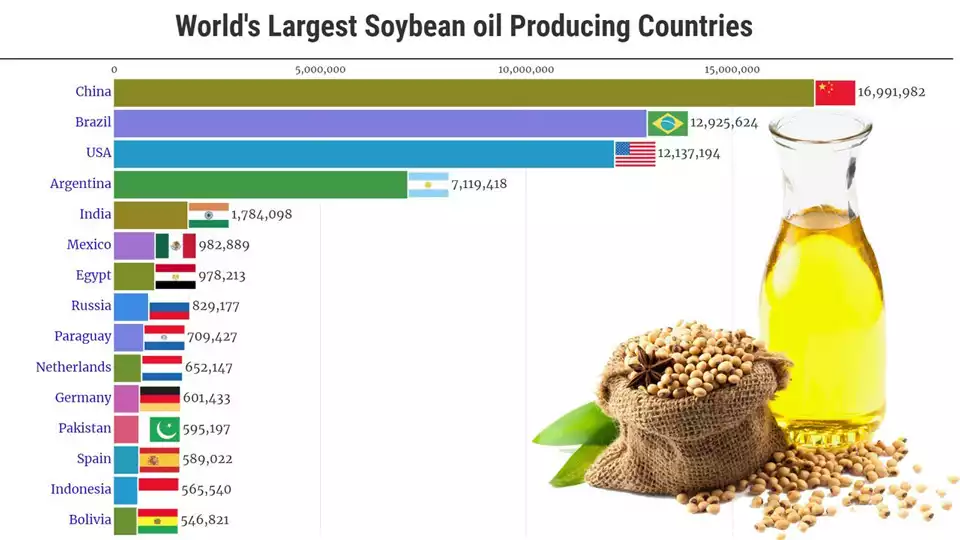
Where is soybean oil produced
How Is Soybean Oil Made
You can produce soybean oil using two methods: mechanical and chemical. The mechanical method, a traditional approach, uses a screw press machine to squeeze oil out from seeds and kernels. The chemical method extracts oil with solvents.
Each method has its pros and cons. The mechanical method is natural and healthy but yields less oil. However, the solvent extraction method provides a much higher oil yield. You can choose one based on your capacity and oil-making needs, or even use both together. Next, let us learn more about the soybean oil processing process:
Soybean Pretreatment
First, you start with the preparatory section in the soybean oil manufacturing process. This initial stage processes raw soybeans to make them ready for oil extraction.
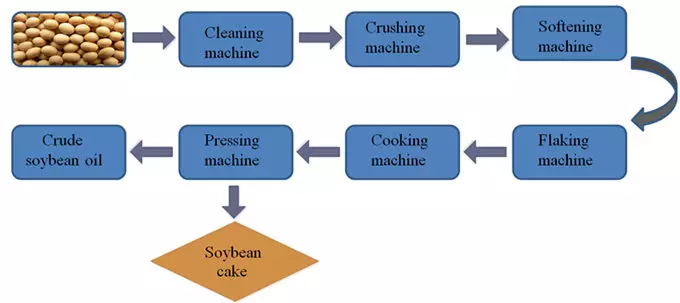
Soybean pretreatment process
Cleaning
When soybeans arrive at an oil mill, they often contain various foreign materials acquired during harvesting or transportation. You clean the soybeans first to ensure they are free from stones, dust, dirt, and other undesirable particles. This crucial process not only enhances oil yield but also reduces wear and tear on oil processing machinery.
How you handle seed cleaning significantly influences the entire operation, affecting the yield, quality, and value of your oil, ultimately impacting your profits and losses. Neglecting this crucial step could lead to substantial increases in operating costs and reduced returns, amounting to tens of thousands of dollars.
Destoning
The destoning process uses a density cum gravity separator with an aspiration system. It aims to improve the purity and quality of oil-bearing seeds by effectively eliminating stones the same size as soybean seeds. This process is crucial to enhance the purity and quality of the soybeans, resulting in a superior end product suitable for oil extraction.
Cracking and Dehulling
Preparing soybean oil involves cracking and dehulling, where you crack open the soybeans to break them into smaller pieces. Once cracked, you carefully remove the outer hulls with a machine called a Dehuller. This reveals the cotyledons, which are the embryonic seed leaves of the soybean.
Flaking
Next, you flatten the cotyledons into flakes or roll them. This enhances the surface area, facilitating the extraction of soybean oil.
Cooking
After flaking, you carefully heat the flakes to an optimal temperature. This prepares them for oil extraction while neutralizing any enzymes that may have caused the deterioration of the oil. You place the oilseeds in a vapor-tight cooker to condition them to the required temperature. Cooking breaks oil cells and eliminates moisture as steam, aiding in lowering the oil’s viscosity and facilitating oil separation during the extraction process.
Expanding
The expanding process involves heating the cleaned soybeans to facilitate soybean oil extraction. You can achieve this through mechanical pressing or by using solvents like hexane. Mechanical pressing involves physically pressing the soybeans to release the oil, while solvent extraction is more efficient for large-scale production.
Drying and Cooling
After expanding, you can use a plate dryer to dry the soybean flakes to reduce their moisture content. This essential step enhances the efficiency of the subsequent oil extraction process and improves the overall quality of the extracted oil.
After drying, cool the soybean flakes to an appropriate temperature before proceeding with the next processing stages. This cooling step plays a crucial role in preserving the oil’s integrity and ensuring the high quality of the final product by preventing degradation.
Soybean Solvent Oil Extraction
Once the soybean seeds undergo the preparatory section processes, you move them to the solvent extraction plant. The solvent extraction process is a common method used for soybean oil extraction. The aim is to use a solvent to dissolve a target solute and wash it out of the solid plant component. The processes involved at this stage are provided below.
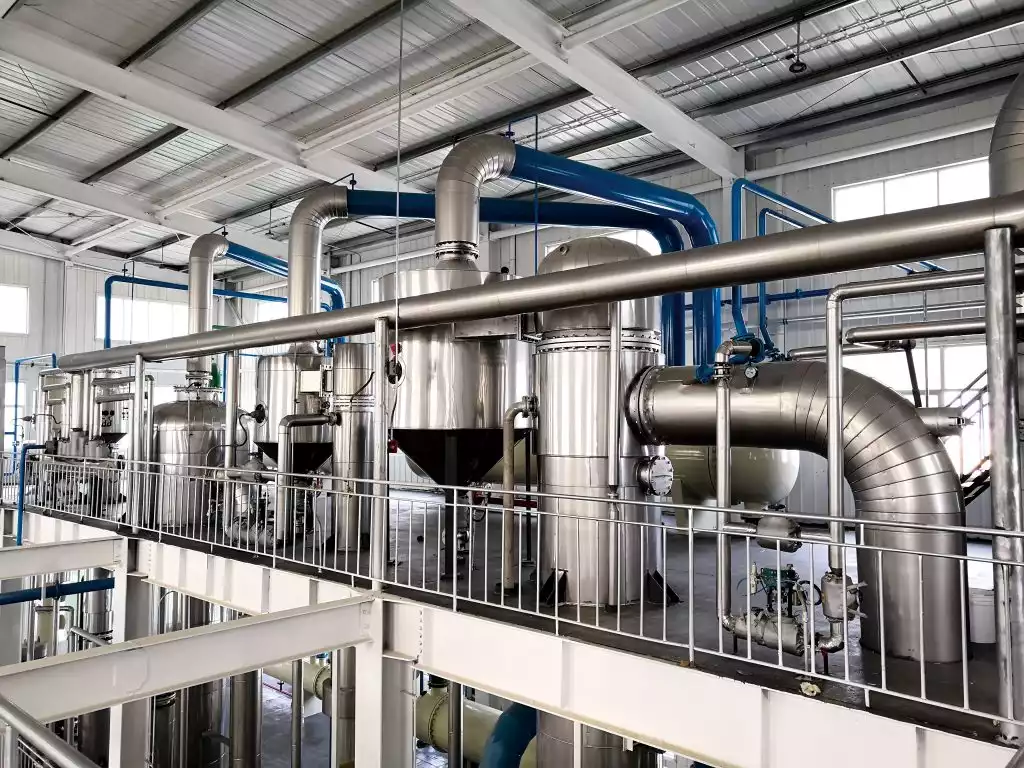
Soybean solvent oil extraction
Main Extraction
First, you clean and crack the soybeans to reduce their size and create maximum surface area for oil extraction. Next, you dissolve the oil content by treating the cracked soybeans with a solvent like hexane. The mixture obtained, called miscella, contains oil, solvent, and other impurities.
Desolventizing
Next, you remove the solvent from miscella using a method called desolventizing. During this process, you heat the miscella in an evaporator, vaporizing the solvent and separating it from other components. You then condense and gather the solvent vapors for reuse.
Distillation
After desolventizing, you proceed with distillation. This process uses heat to separate various components of the oil based on their distinct boiling points. The process results in high-quality soybean oil by eliminating any remaining volatile substances and impurities.
Solvent Recovery
Solvent recovery is a significant step in the soybean oil production process. You carry it out to recover and reuse the solvent used in extraction. This sustainable practice not only lessens waste but also ensures environmental-friendliness and cost-effectiveness by reducing the need for fresh solvent.
Soybean Oil Refining Plant
Refining plays a key role in the manufacturing of edible oils like soybean oil. Its chief purpose is to eliminate impurities, volatile substances, and unwanted components from crude oil. Refining results in the production of high-quality, stable edible oil that is perfectly safe to consume. The refining stage involves the following processes: (Read more: soybean oil refinery plant >>)
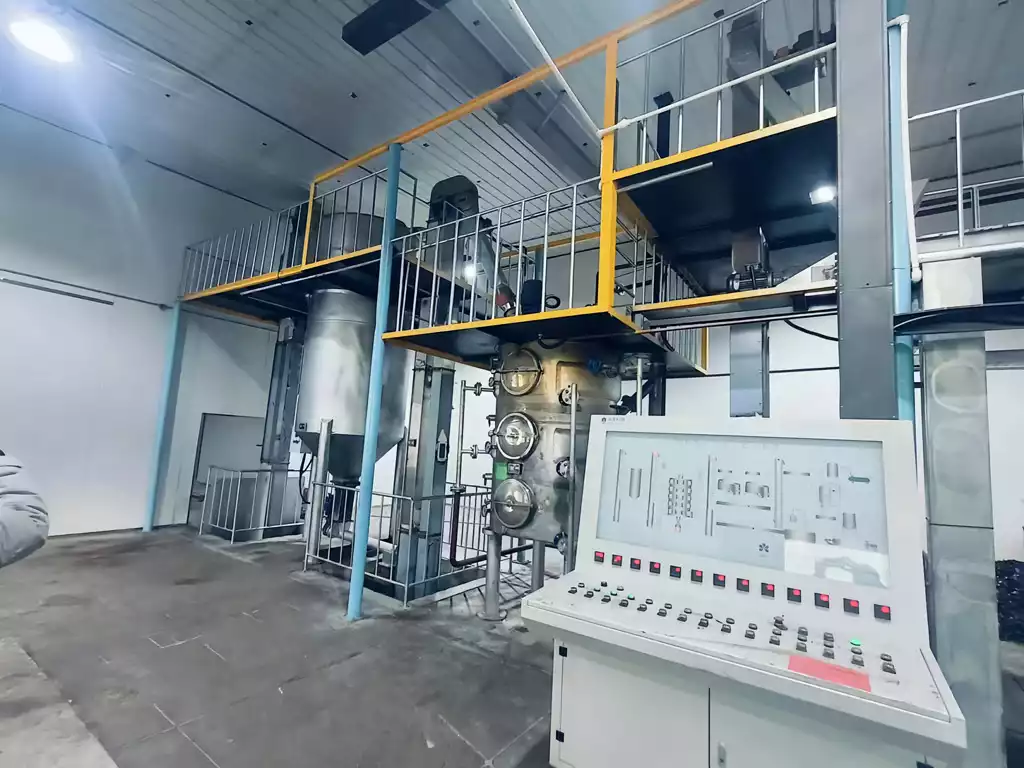
Soybean oil refining plant
Water Degumming
Water Degumming is the first part of the refining process. You treat crude soybean oil with water to remove gums, phospholipids, and other impurities. These unwanted components form emulsions with water, which you can separate through mechanical means like centrifugation, producing degummed oil.
Neutralization/Washing
After degumming, you can use Huatai`s neutralization tank to neutralize the oil. In this process, you use an alkaline solution like sodium hydroxide to eliminate acidic impurities and free fatty acids. This step stabilizes the soybean oil by adjusting its pH level. Besides, the process also facilitates the removal of any leftover soap or other impurities by water washing.
Bleaching
In the refining process, you cannot undermine the role of bleaching. The process successfully removes trace metals, color pigments, and other impurities from the oil. For this, you add the oil to an adsorbent material like activated carbon or activated clay, which absorbs these impurities. Filtration then yields a lighter-colored oil that is free from any unwanted substances.
Deodorization
Deodorization is the final stage of soybean oil refining. Here, you can use a deodorizing tower to heat the oil under a vacuum to remove any volatile compounds and lingering odor. Steam takes away these undesirable components, resulting in an odorless and clean product suitable for consumption.
It must be acknowledged that the refining process may vary depending upon the oil-specific needs. There may be some variations or additions of certain steps to cope with market-specific demands or regulations. That said, to ensure the production of premium-quality, safe edible oil, you need to maintain strict quality control throughout the process.
In general, soybeans are crushed, adjust moisture content, heated to between 60 and 88 ºC (140–190 °F), pressed into flakes, and solvent extracted with hexane. The oil is then refined. This is the basic process in today’s soybean oil processing plants.
How Much Oil Is Produced from 1 Kg of Soybean
The oil content of soybean is 18%-20%. If you process 1 kg of soybeans, the amount of soybean oil you get varies based on the processing method. Using the soybean pretreatment and pressing method, you will get about 130g of soybean oil. If you use the solvent oil extraction method, you will get about 190g of soybean oil.
However, whether you can use the solvent extraction method depends on how many tons of soybeans you have. If the input capacity is larger than 30 tons per day, a soybean oil solvent extraction plant is the best choice for you. If the input capacity is less than 30 tons per day, a soybean oil pressing plant is better.
How to Improve Soybean Oil Production
When making soybean oil, improving the yield is a concern for every producer. It is also one of the key factors that affect the sales volume of soybean oil press manufacturers. So, how do you improve the yield of soybean oil?
Intensively Sort the Soybeans
This is the basic factor to ensure the oil yield and quality of soybean oil. When sorting, remember to choose clean, fine soybeans with no mildew and no broken pieces.
Remove Impurities During Pretreatment
Take every detail into consideration for the pretreatment of soybeans. During air drying, thoroughly remove straw, mud, sand, etc.
Control the Temperature of the Oven Cavity
In the soybean steam frying process, pay attention to controlling the furnace. When it is medium well cooked, open the upper part of the stove mouth and seal the lower part wind gap to control the fire. Avoiding a vigorous fire prevents the soybeans from being over-fried, ensuring the taste and quality of the oil are not affected.
Choose High-Quality Soybean Oil Press Equipment
The equipment you use directly impacts the oil quality and yield. According to surveys, under equal soybean quality conditions, good soybean pressing machines can improve oil yield by 2-3%. This may seem insignificant, but it adds up, especially for large-scale production. Additionally, high-quality equipment tends to have a longer service life compared to lower-quality options.
By following these steps, you can significantly improve the yield and quality of your soybean oil, ultimately enhancing your production efficiency and profitability.

How to make soybean oil
Conclusion
Understanding the process of soybean oil production, from the initial preparation of soybeans to the final refining stages. It is crucial for anyone involved in the industry. By choosing the right production methods, and maintaining high standards of cleanliness and quality, you can produce high-quality soybean oil that meets market demands. If you are interested in our soybean oil extraction and processing equipment, please contact us at 0086-159-3728-9608.
Get your best price
- Engineer quick quote
- The overall delivery speed is fast
- Financial choice
- Low installation costs and cost savings
30 years+ of oil mill plant R&D
More than 56 innovative technologies
